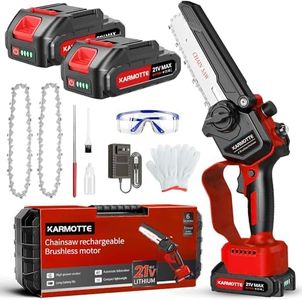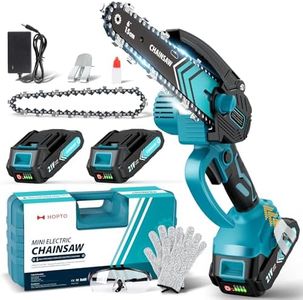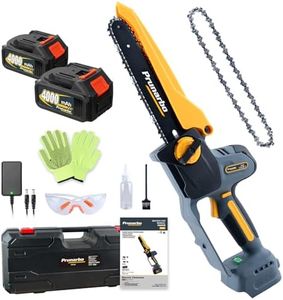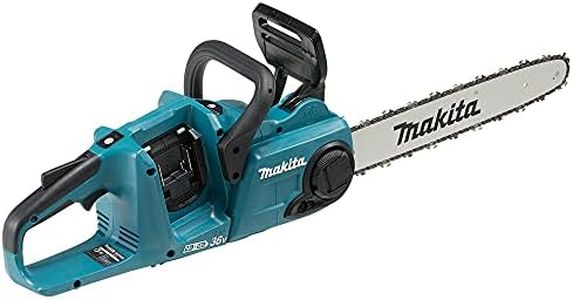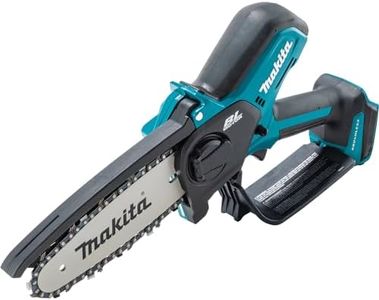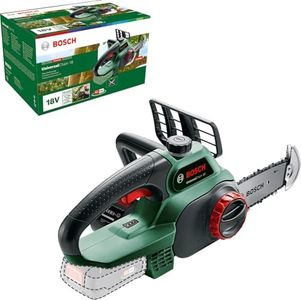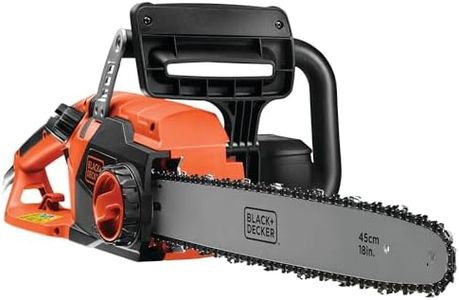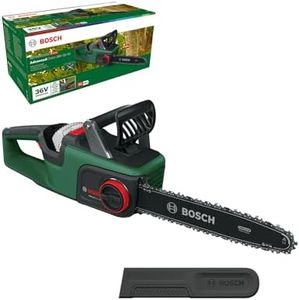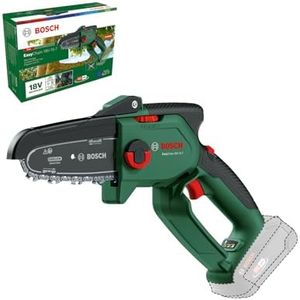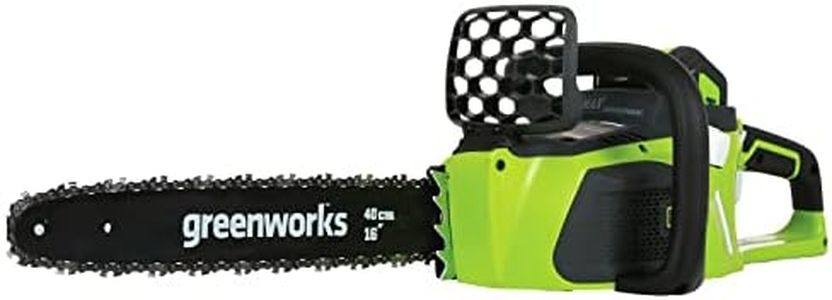We Use CookiesWe use cookies to enhance the security, performance,
functionality and for analytical and promotional activities. By continuing to browse this site you
are agreeing to our privacy policy
10 Best Electric Chainsaws
From leading brands and best sellers available on the web.By clicking on a link to a third party's website, log data is shared with that third party.
Buying Guide for the Best Electric Chainsaws
Choosing an electric chainsaw can feel complicated, but focusing on a few key details will help you match the product to your needs. Think about where and how you plan to use the chainsaw—whether it's for light yard work, cutting firewood, or tackling larger jobs. Prioritize safety and comfort, since these tools can be dangerous if not handled properly. Understanding the main features will make it much easier to pick the right one for your tasks and skill level.Power Rating (Amperage or Voltage)The power of an electric chainsaw is measured in either amperage (amps) for corded models or voltage (volts) for battery-powered ones. This tells you how much electrical energy the saw uses, affecting its cutting ability. Lower-rated models (around 8-10 amps or 18-20 volts) are good for light work like trimming branches. Medium levels (12-15 amps or 36-40 volts) can handle small to medium logs. Higher ratings (16+ amps or 60+ volts) are meant for tougher jobs and thicker wood. Choose a power level that suits the hardest work you expect to do but don’t go overboard if you only need light work done.
Bar LengthBar length is the size of the cutting area, usually measured in inches. Shorter bars (10-12 inches) are best for light pruning and small branches. Medium bars (14-16 inches) can deal with small to medium logs and thicker branches around the yard. Longer bars (18 inches or more) are suitable for larger diameter wood and tougher jobs. Consider the typical size of the wood you plan to cut and pick a bar length that's just long enough—bigger isn’t always better, as it can make the saw heavier and harder to handle safely.
Corded vs. CordlessSome electric chainsaws have a cord that must be plugged in, while others work with rechargeable batteries. Corded saws offer steady power and unlimited run time but require access to an outlet and may need long extension cords. Cordless saws allow for more movement and convenience but have limited battery run times. If you plan to work far from power sources or need to be mobile, cordless is often best. For work near the house or with lots of time, a corded model may be more practical.
WeightThe weight of a chainsaw affects how long you can comfortably use it and how easy it is to control. Lightweight saws (around 6-8 pounds) are easier for beginners and perfect for light pruning. Heavier models (10 pounds or more) can be stable for tougher jobs but may cause fatigue faster. Think about your own strength and the amount of time you’ll be working—if you need to use the saw for long sessions or need to keep it above your shoulders, choose a lighter model.
Safety FeaturesSafety features can include chain brakes, kickback protection, hand guards, and automatic shut-offs. These reduce the risk of injury and make using the saw less intimidating for less-experienced users. Look for models that offer multiple safety features, especially if you’re not used to handling power tools. Your personal experience, comfort, and planned usage should guide you here—if unsure, the more safety features, the better.
Ease of MaintenanceChainsaws need basic maintenance such as chain tensioning, oiling, and periodic cleaning. Some models make tasks easier with tool-less chain tension adjusters or automatic oilers. If you prefer a hassle-free experience, look for models that are simple to maintain or come with easy-access systems. If you don’t mind a bit of routine care, this spec is less critical for you.
